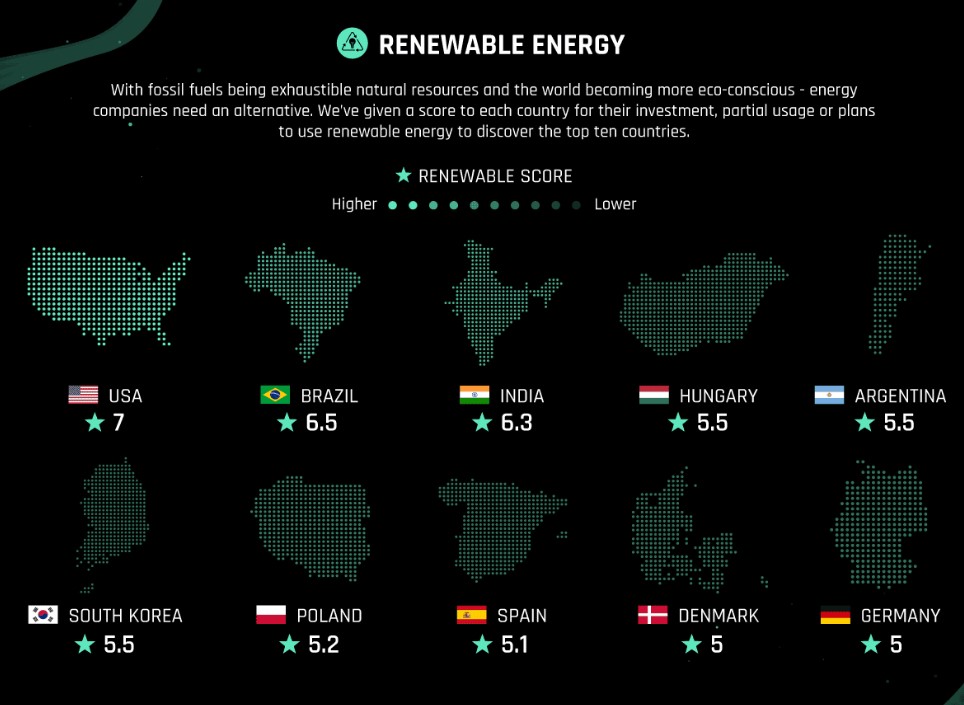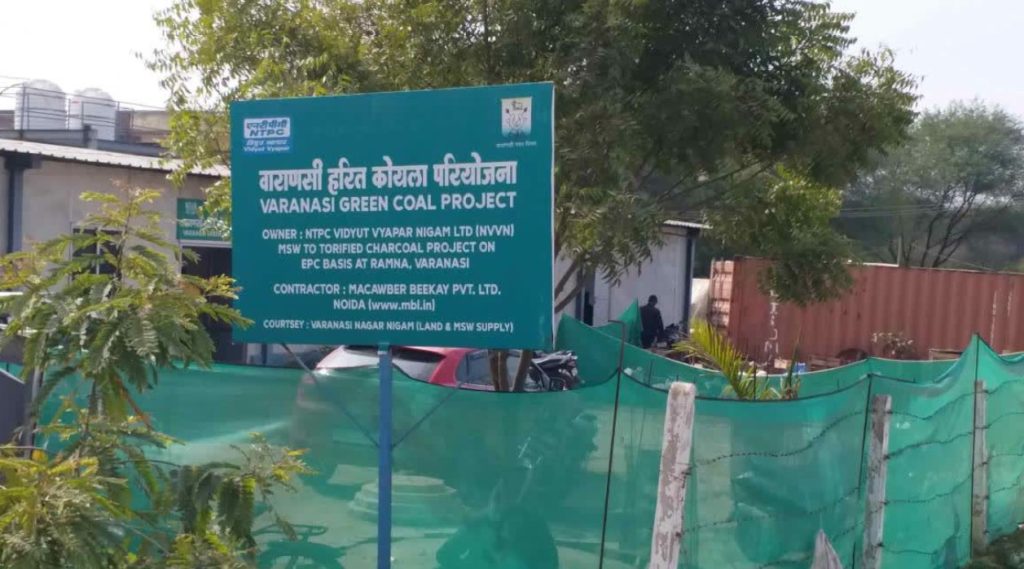CONTENTS
- India’s Green Energy Rise, Including ‘Green Coal’
- Ban on Books and Films
India’s Green Energy Rise, Including ‘Green Coal’
Context:
The Reserve Bank of India’s latest report highlights a significant surge in global optimism about India’s economic prospects, particularly within the energy sector. This year, green energy projects valued at approximately Rs 700 billion are set to commence, marking a major milestone in investment.
Relevance:
- GS1- Mineral and Energy Resources
- GS3- Environmental Pollution and Degradation
Mains Question:
What is green coal and how does it differ from the traditional coal in terms of advantages offered? Discuss the initiatives taken by India in the production of green coal. (15 Marks, 250 Words).
More on the Report:
- By 2025-26, further project investments are anticipated to reach Rs 765.2 billion, bolstered by progressive policies promoting sustainable energy initiatives.
- Furthermore, India has risen to become the world’s third-largest producer of renewable energy, emphasizing its dedication to sustainable development.

Green Coal:
- Green coal, also known as bio-coal, is an eco-friendly alternative to fossil fuels, produced from waste materials such as agricultural residue and municipal solid waste (MSW).
- The waste-to-energy process involves the careful collection and treatment of municipal solid waste (MSW), followed by the removal of moisture and the segregation of non-combustible materials.
- The refined waste is then processed to produce high-calorific charcoal powder, which has a higher energy value than traditional coal.
Significance of Green Coal:
- One of the main benefits of green coal is its ability to significantly reduce CO2 emissions. It has become popular due to its potential to replace traditional coal for energy production, thereby cutting down CO2 emissions from coal combustion.
- Replacing one kilogram of coal with green coal can reduce CO2 emissions by approximately two kilograms.
- This is a crucial step towards reducing the carbon footprint of industries reliant on fossil fuels, such as thermal power plants, petrochemical refineries, and cement factories.
- A notable innovation on the horizon is green coal, which has the potential to revolutionize energy production in India.
- Green coal serves as a sustainable alternative to traditional coal and can be seamlessly integrated into existing thermal power plants.
- For instance, a 1,000 MW power plant that consumes around five million tonnes of coal annually could significantly reduce its carbon emissions by replacing just 10 percent of its fossil fuel with green coal.
- This substitution would equate to half a million tonnes of sustainable fuel, reducing CO2 emissions by approximately 2 kg for each kg of coal replaced.
Initiatives in this Direction:
- The National Thermal Power Corporation’s Vidyut Vyapar Nigam Limited (NVVNL) has launched a commercial green coal facility in Varanasi, Uttar Pradesh, to produce green coal, also known as torrefied charcoal, from waste. This marks India’s first initiative to produce green coal from agricultural waste and MSW.

- This project, executed by its subsidiary NTPC Vidyut Vyapar Nigam Ltd and awarded to Macawber Beekay, features a plant capable of processing 600 tonnes of waste daily.
- The success of NTPC’s Varanasi Harit Koyla Pariyojna, managed by Macawber Beekay Private Limited (MBL), has been a significant milestone.
- The green coal project is a pivotal component of the “Make in India” initiative and marks considerable progress towards the “Atmanirbhar Bharat” mission.
- Following the successful demonstration of this technology in Varanasi, NTPC has commissioned MBL to undertake additional projects, including the establishment of the world’s largest waste-to-green coal plant in Greater Noida.
- Indian companies are increasingly diversifying into green energy solutions, with MBL at the forefront of transforming municipal solid waste into eco-friendly green coal.
Conclusion:
The investments and advancements in India’s energy sector signify a robust commitment to sustainable development and a forward-looking approach to energy production. These efforts not only enhance India’s energy security but also contribute significantly to global environmental goals. The shift towards green coal and renewable energy highlights India’s proactive stance in addressing climate change and promoting a sustainable future.
Ban on Books and Films
Context:
The potential for protests, communal tension, or threats to law and order should not be used as grounds to halt the screening of a film. A state government’s recent decision to delay the release of a film for two weeks infringes on the freedom of expression under the guise of maintaining order and preventing communal strife. Such bans on public film screenings, regardless of their content, are inappropriate in a democratic society.
Relevance:
GS2-
- Government Policies & Interventions
- Issues Arising Out of Design & Implementation of Policies
Mains Question:
No ban on books or films can be justified in the name of upholding order. Comment critically with reference to the rising cases of delays in release of some films in India (10 Marks, 150 Words).
Judiciary on Such Bans:
- The Bombay High Court, which initially blocked the release of the same film, has lifted the ban after the producer agreed to remove some controversial dialogues.
- The court noted that allowing an individual to prevent the release of a certified film would lead to filmmakers being held hostage, aligning with previous judicial rulings.
- Once certified by the Central Board of Film Certification, after a thorough review of its suitability for public viewing, law enforcement should not have the authority to impose a second opinion.
- The Central Bureau of Film Certification (CBFC) is a statutory body operating under the Cinematography Act of 1952.
- It regulates the content of films released to the public. The CBFC uses a prior certification system for films, and broadcasters must adhere to the guidelines set forth in the ‘Programme Code and Advertisement Code’ based on the certification provided.
Films are categorized into four groups:
- ‘U’ for unrestricted exhibition,
- ‘UA’ for unrestricted exhibition except for children under 12,
- ‘A’ for adult-only exhibition,
- ‘S’ for films restricted to a specific class of people.
- Article 19(2) of the Constitution permits the government to impose reasonable restrictions by law on the freedom of speech and expression.
- These restrictions can be made in the interest of India’s sovereignty and integrity, state security, friendly relations with foreign states, public order, decency or morality, or concerning contempt of court, defamation, or incitement to an offense.
- The Cinematograph Act of 1952 includes similar provisions aligned with those stated in Article 19(2).
- The notion that a work, whether a book, play, or film, can be banned due to the threat of protests or potential violence has been rejected by the Supreme Court of India in several landmark rulings.
- “Freedom of expression cannot be suppressed on account of threats of demonstrations, processions, or violence,” the Court stated in its 1989 judgment in S. Rangarajan vs. P. Jagjivan Ram regarding the film Ore Oru Gramathile.
- Emphasizing freedom of expression does not mean endorsing films with distasteful or vile content. In the case of the film currently under scrutiny, there is justified criticism, starting with its overtly communal title.
- The posters and synopsis suggest the film perpetuates sectarian claims that a particular community is responsible for population growth.
- The film’s advocates may argue it aims to raise awareness about population control, and viewing the film might dispel such concerns. However, it is undeniable that modern filmmaking often stereotypes the community.
Conclusion:
Any film that emphasizes such notions is likely pandering to communal factions and the political forces that support them. To maintain a free and open society, it is unnecessary to suppress any viewpoint. However, it is crucial to develop the means to counter sectarian propaganda with facts, without resorting to unconstitutional methods.




